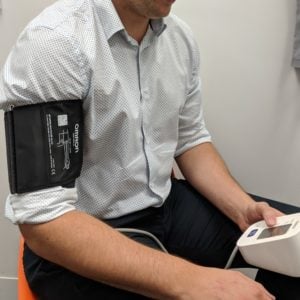This is a follow on blog from the previous article on Blood Flow Restriction (BFR) training. Here we will discuss the current theories on how blood flow restriction and low load exercise might help to produce similar muscular and strength benefits to that of heavy load resistance exercise. The mechanisms by which BFR may lead to enhanced adaptations to training compared to similar exercise without BFR are still largely unclear. Although not definitive, theories explaining the mechanism of action regarding BFR training based on increased anabolic hormones, increased type II muscle fibre recruitment, and increased cellular swelling have each been proposed.
Bi-products of muscular contraction which normally would be flushed out remain localised and build up in concentration, such as hormones including Insulin Growth Factor 1 (IGF -1). Along with testosterone, IGF-1 is the main positive regulator of skeletal muscle mass in the human body.
- Increased Muscle Fibre Recruitment
Type I muscle fibres require oxygen to perform contraction. These fibres are associated with endurance and lower loads
Type II muscle fibres are anaerobic and are responsible for strength, heavy lifting and have a greater potential for growth and development.
It has been theorised that due to the hypoxic environment created by BFR, Type I fibres are unable to cope with the demands of the workload, therefore type II fibres are recruited quicker.
Therefore with BFR training with low loads, we are able to train our type II muscle fibres as we would with heavy load resistance training.
- Cellular Swelling
BFR is proposed to have a dramatic increase in cellular swelling. In simple terms, cellular swelling is the muscle pump, which represents an increase in intracellular hydration that causes the muscle fibre to swell. Due to the inability for blood to return, it is trapped in the working muscle causing mechanical stress into the cytoskeleton and/or cell membrane. This increase in pressure on the muscle cell membrane is perceived as a threat to the cellular integrity. As a result, this initiates an intracellular signalling response which promotes reinforcement of the cellular membrane.
- Satellite Cell Activity
It has been hypothesized that cellular swelling may enhance hypertrophic adaptations through increased satellite cell activity.
Satellite cells are muscle stem cells that reside within the cell membrane. While resting, these cells are dormant. When the muscle cell is subjected to mechanical overload, however, satellite cells enter the cell cycle and initiate muscular repair.
As you can see these theories co-exist the moment and can be a little confusing. New research is needed to further support these theories as well as the use of BFT in injured populations.
Our Physiotherapists here at Bend + mend in Sydney’s CBD pride themselves on keeping up to date with the latest research in all areas of rehabilitation so feel free to book in if you have further questions on optimal training methods after injury.






